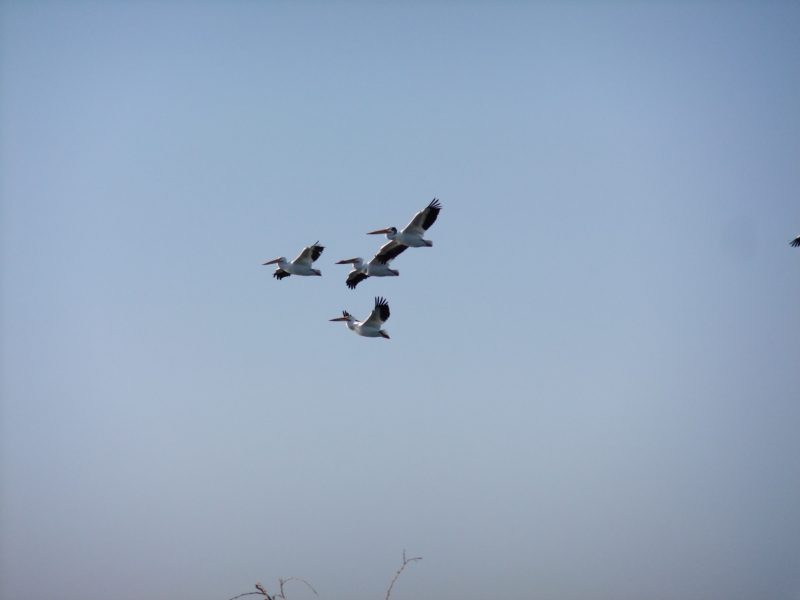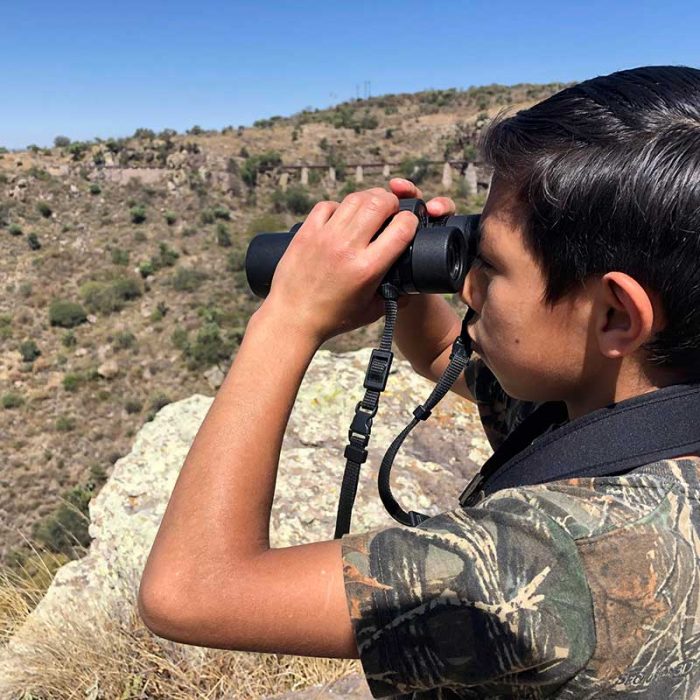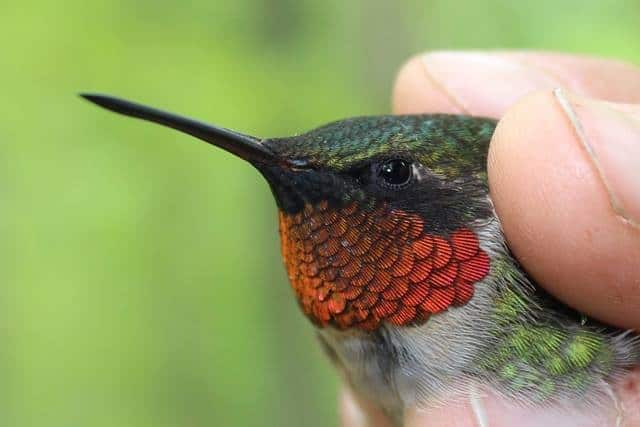American White Pelicans. Photo by Sachi Schott.
The spring still had a few surprises in store for us as PIBO began to wind down its migration monitoring program for the season. From June 1st to 11th, we continued the daily 90-minute census at Fish Point, and got to know the local breeding birds very well! A few migrants were seen at the beginning of the month, including a Veery that was heard singing on June 6th and a few small flocks of Least Sandpipers and Sanderlings. One last unusual bird turned up as well – on June 3rd, a Lark Sparrow was seen by the west beach. This striking sparrow is a frequent vagrant in Ontario, with five or six showing up each year. As well, an Acadian Flycatcher (which is a Species at Risk in Ontario) was heard singing at the beginning of the trail on June 3rd.
From June 7th onwards almost all the birds that were seen and heard were birds on their breeding territories. Going by what was observed on census each day, the following species are breeding on Fish Point this year:
Canada Goose
Eastern Wood Pewee
Great Crested Flycatcher
Eastern Kingbird
Red-eyed Vireo
Tree Swallow
Carolina Wren
House Wren
Blue-gray Gnatcatcher
American Robin
Yellow Warbler
Northern Cardinal
Indigo Bunting
Red-winged Blackbird
Common Grackle
Baltimore Oriole
Interestingly, the male Carolina Wren that has been singing at the head of the Fish Point trail is banded! Perhaps he is one of PIBO’s past visitors…
The majority of Red-winged Blackbird and Common Grackle activity has been centered on Fox Pond. The nests of Red-winged Blackbirds, made of woven grasses, can be seen in among the phragmites at the edges of the pond, and the adult birds are busy ferrying beaks full of fish flies, gleaned from the trees nearby, back to their hungry nestlings.
At least one pair of Canada Geese nested in Fox Pond this year. Other family groups, and groups of unpaired adults, have been seen on the beaches and at the tip of the point. One large blended family was seen paddling in Mosquito Bay on June 11th. The pair of adults in question were escorting a total of twenty-two goslings, of various sizes.
Double-crested Cormorants, Great Blue Herons, Herring Gulls, Ring-billed Gulls, Great Black-backed Gulls, and American White Pelicans have also been seen almost daily. The number of American White Pelicans reached a peak on June 10th, when 30 were counted out at the tip. Seen in a large group, it becomes easy to see the plumage and colour variations of individual birds. Young white pelicans have black on their heads, and pale bills; older birds have more white, and their bills are more strongly coloured. As well, white pelicans in breeding condition develop a ‘centerboard’ that rises up from the top of their bill. Presumably, other white pelicans find this very attractive!
In total, PIBO’s spring migration coverage at Fish Point ran from April 1st to June 11th, 2017, for a total of 72 coverage days. Five participants helped to record 163 species at Fish Point during PIBO’s standard count period. 659 birds of 61 species were banded over 1326.692 net-hours, for an average catch rate of 0.497 birds/net-hour. Now that migration monitoring is over for the spring, PIBO staff will concentrate on conducting Breeding Bird Censuses at the Nature Conservancy of Canada (NCC) property on Brown’s Road.







